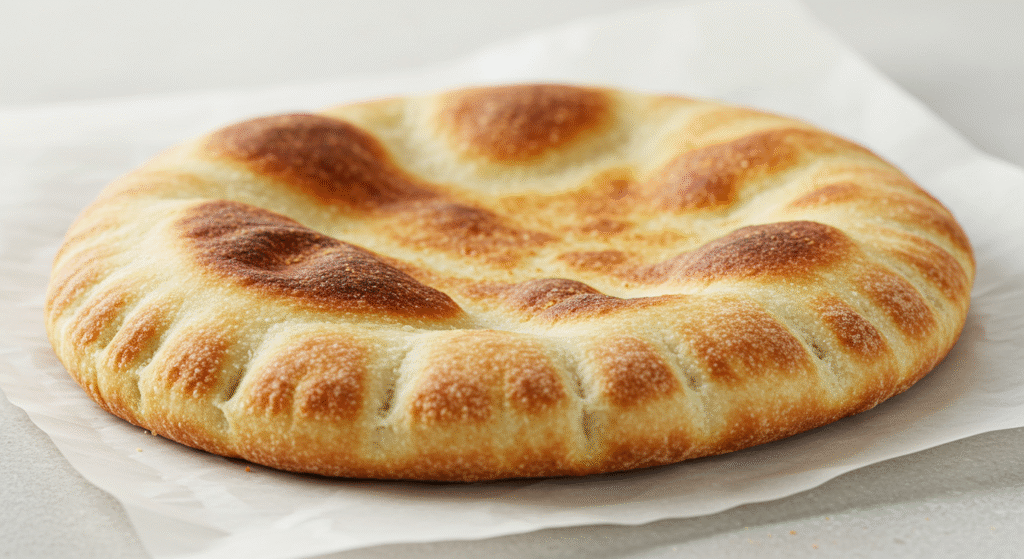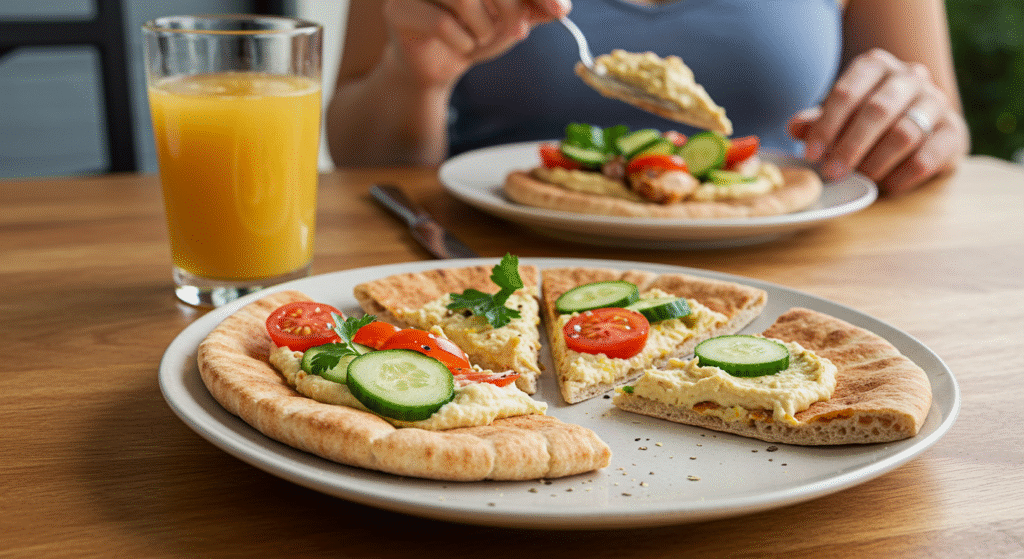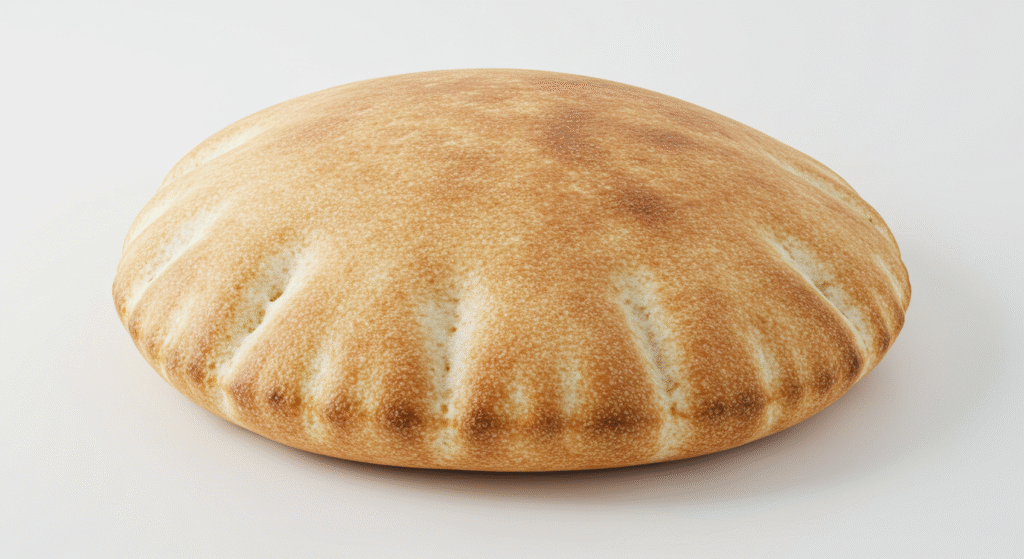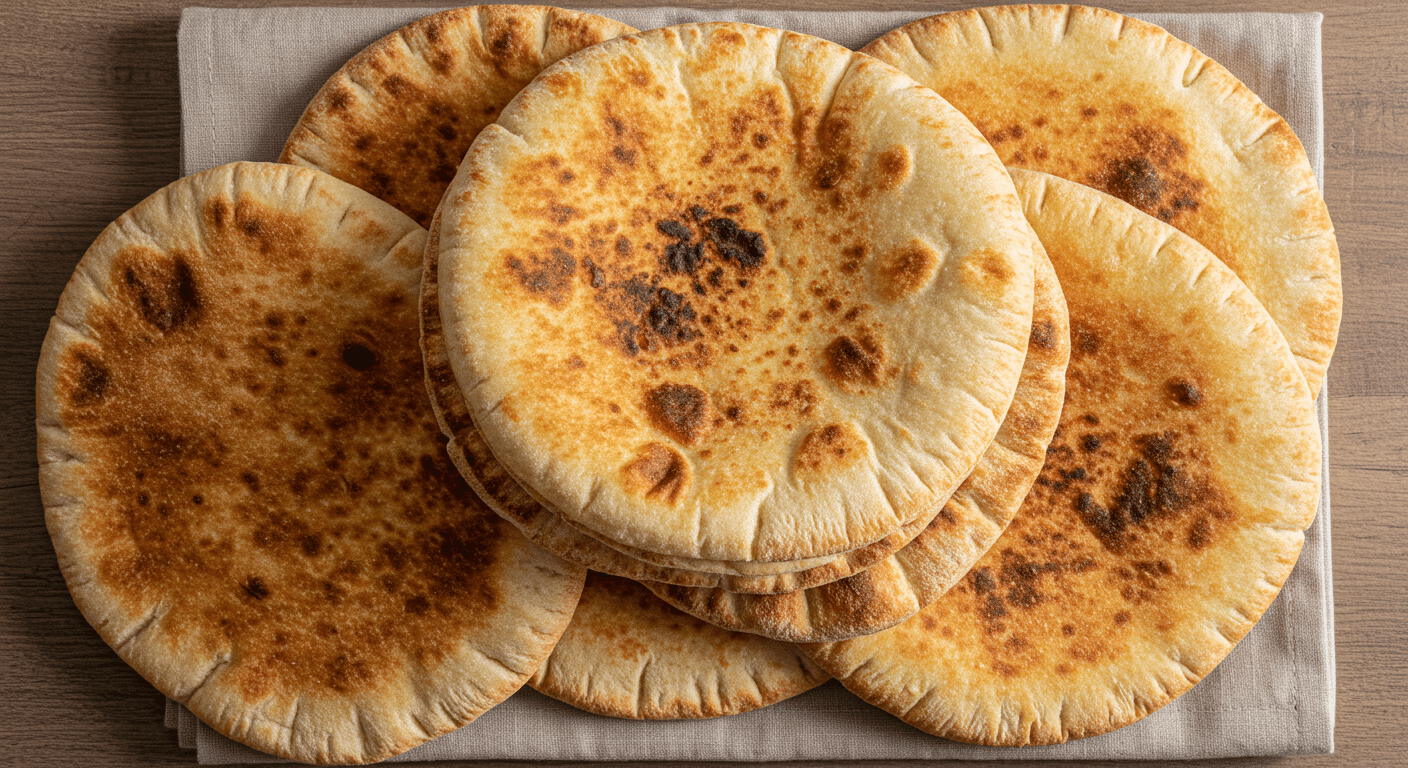Is Pita Bread Healthy? Heavenly Benefits
Table of Contents
When you think about a healthy diet, you might question the nutritional value of your favorite foods. This includes pita bread. So is pita bread healthy ? It’s not just a versatile food; it’s also a topic of interest for those aiming for a healthier diet.
The nutritional content of pita-bread changes based on what’s in it and how it’s made. Usually, it’s a good source of carbs. And if it’s made with whole grains, it can also give you fiber and important nutrients.
Looking into the health effects of eating pita-bread, you’ll find both good and bad sides. Knowing these can help you decide if it’s right for your diet.
Key Takeaways
- Pita bread can be a healthy choice if eaten in moderation.
- The nutritional value of pita bread depends on its ingredients and how it’s made.
- Whole grain pita-bread is better than the refined flour kind.
- Pita-bread is a good source of carbs and fiber.
- It’s important to balance pita-bread with other foods that are rich in nutrients.
What Is Pita Bread?
Pita bread is a common feature in numerous culinary traditions worldwide. It’s a type of flatbread that originated in the Middle East. For centuries, it has been a dietary staple. It’s known for its soft interior and crispy crust, making it versatile for various meals.
Origin and Traditional Uses
Pita bread has a rich history, dating back to ancient times. It was traditionally made by baking dough in a clay oven or on a hot stone. The bread was a staple in Mediterranean and Middle Eastern cuisines, used for scooping up dips, meats, and vegetables.
Its adaptability and ease of use have earned it popularity in many cultures. The traditional uses of pita-bread are diverse. It can be a base for sandwiches or a side to dips like hummus or tzatziki. Its ability to be torn into pieces and used as a utensil adds to its cultural significance.
How Pita Bread Is Made
The process of making pita bread involves mixing flour, water, yeast, salt, and sometimes olive oil to create a dough. The dough is then kneaded until it becomes smooth and elastic. After a period of fermentation, the dough is divided into smaller portions, rolled out, and baked at high temperatures.
This causes the bread to puff up and create a pocket. Understanding how pita-bread is made and its origins can help you appreciate its value in your diet. Whether you’re looking at its pita-bread calories or exploring the benefits of pita bread, knowing its background is essential.
Nutritional Profile of Pita Bread
Looking into pita bread’s nutrition helps you choose better for your diet. It’s a common food in many cultures, packed with nutrients for a balanced diet. Let’s dive into what makes it nutritious.
Calories and Macronutrients
A single serving of pita-bread, about 1 ounce or 28g, has 70-80 calories. It’s mostly carbohydrates, with 15-20 grams per serving. Protein is less, at 2-4 grams, and fat is almost none, under 1 gram. These numbers can change based on the flour and any extra ingredients.
Vitamins and Minerals
Pita-bread is rich in vitamins and minerals, especially if it’s made with enriched flour. It has iron, thiamin, niacin, and folate. Whole wheat pita bread has even more benefits, like more fiber and minerals like selenium and manganese.

Fiber Content
The fiber content in pita-bread depends on the flour type. Whole wheat pita-bread has 4-6 grams of fiber per serving. This helps with digestion and keeps blood sugar levels healthy.
Is Pita-Bread Healthy? Analyzing the Benefits
Pita-bread can be a healthy choice for you. It has several benefits that make it great for your diet.
Lower Calorie Option Compared to Some Breads
Compared to many other breads, pita is a lighter, lower-calorie option. It has fewer calories than some denser breads. This makes it good for those watching their weight.
| Bread Type | Calories per Serving |
|---|---|
| Pita-Bread | Approximately 100-150 calories |
| Dense Whole Grain Bread | Approximately 150-200 calories per slice |
Potential Digestive Benefits
The type of flour used in pita bread can help your digestion. Whole wheat pita, for example, is full of fiber. It may support digestion and promote better gut health.
Versatility in Healthy Meal Preparation
Pita bread is very versatile for healthy meals. You can fill it with veggies or use it for healthy pizzas. Here are some ideas:
- Grilled vegetable pita wraps
- Pita-bread topped with hummus and fresh vegetables
- Mini pita pizzas with tomato sauce and mozzarella cheese
Potential Drawbacks of Pita Bread
Despite its benefits, pita bread may have drawbacks when it comes to healthy eating. It can be good for you, but certain things can affect its nutritional value.

Refined Flour Concerns
Traditional pita bread often uses refined flour. This flour is processed and loses fiber and nutrients. Eating it often can raise the risk of diseases like diabetes and heart disease. Opting for whole wheat pita preserves more fiber and essential nutrients.
Gluten Content and Sensitivities
Pita-bread usually has gluten, a protein in wheat, barley, and rye. People with gluten sensitivities or celiac disease should be careful. Gluten can cause health problems, like digestive issues and inflammation. Luckily, there’s gluten-free pita-bread made from rice flour or corn flour.
Sodium and Additives in Commercial Varieties
Some pita-bread sold in stores has a lot of sodium and additives. Too much sodium can lead to high blood pressure and heart disease. It’s important to read labels and pick products with less sodium and fewer additives. Key things to look for include:
- Checking the ingredient list for added preservatives
- Opting for low-sodium options
- Preferring products with fewer ingredients
Knowing these potential issues helps you make better choices about pita bread. This way, it can stay a healthy part of your diet.
Healthier Pita Bread Options
Pita-bread can be a healthy choice if you pick the right kind. There are many options, so you can enjoy pita-bread and get its health benefits.
Whole Wheat and Whole Grain Varieties
Whole wheat or whole grain pita-bread is better than white flour pita. They have more fiber, vitamins, and minerals. Whole wheat pita bread is especially good for digestion and feeling full.
Gluten-Free Alternatives
If you can’t have gluten, gluten-free pita-bread is a good choice. It can be prepared using flours like rice, corn, or almond. It tastes great and fits dietary needs.

How to Read Pita-Bread Labels
It’s important to read pita bread labels well. Look for whole grains, few additives, and low sodium. Avoid preservatives and artificial flavors. Simple ingredients mean it’s likely healthier.
| Pita-Bread Type | Fiber Content | Gluten Content |
|---|---|---|
| Whole Wheat Pita | High | Contains Gluten |
| Gluten-Free Pita | Varies | Gluten-Free |
| White Flour Pita | Low | Contains Gluten |
Choose whole wheat, whole grain, or gluten-free pita-bread. Be careful with ingredients. When chosen wisely, pita-bread can contribute to a nutritious diet.
Conclusion: Making Pita Bread Part of a Balanced Diet
You now know a lot about whether pita bread is healthy and how it fits into your diet. By looking at its nutritional profile, benefits, and downsides, you can make smart choices about eating pita-bread. Pita-bread’s nutrition changes based on its type and ingredients. Whole wheat and whole grain pita-breads have more fiber and nutrients than refined flour ones.
To eat pita bread healthily, pick varieties with good ingredients and eat them in small amounts. Reading labels helps you avoid too much sodium and additives in some pita-breads. Being careful with your pita-bread choices lets you add it to a healthy diet that boosts your health and happiness.
Knowing if pita-bread is healthy means looking at the type you eat and how it fits with your diet. With this info, you can enjoy pita-bread while keeping your diet balanced and healthy.
FAQ
What is the nutritional difference between whole wheat pita bread and white pita bread?
Whole wheat pita-bread has more fiber, vitamins, and minerals than white pita-bread. It’s made from whole grains. This makes it a healthier choice.
Is pita bread suitable for people with gluten intolerance or celiac disease?
No, traditional pita-bread has gluten, which is bad for those with gluten intolerance or celiac disease. But, there are gluten-free options. They use rice flour or corn flour.
How can I make pita bread a healthier part of my diet?
Choose whole wheat or whole grain pita bread. Be careful with how much you eat. Pair it with veggies, lean proteins, and healthy fats.
What are some common additives found in commercial pita bread?
Some pita-bread has preservatives, artificial flavors, and too much sodium. Always read the label to know what’s in it.
Can pita-bread be part of a weight loss diet?
Yes, pita-bread can fit into a weight loss diet if eaten in small amounts. Choose whole grain options and fill it with healthy ingredients.
How do I store pita bread to maintain its freshness?
Store pita-bread in an airtight container or bag at room temperature for 2 days. Freeze it for longer storage.

